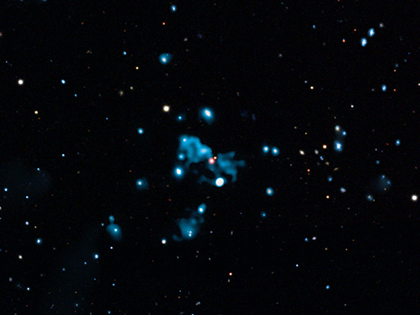Cosmic Poetry Competition 2021: The Winners
Submitted by chandra on Thu, 2021-03-11 10:11We are delighted to again welcome Jonathan Taylor as a guest blogger. Jonathan is the author of several novels and poetry collections, the editor of several anthologies, and Associate Professor in Creative Writing at the University of Leicester in the UK.
I've always been fascinated by the intersections and overlaps between Creative Writing and science. It's always seemed to me that poetry and cosmology, for example, share a great many characteristics, in their methods and means of communication: they both play with, even bend, language; they both use metaphor and analogy; they both re-enchant and defamiliarize our universe, so we see it anew. Having written various poems over the years for Chandra X-Ray Observatory (in March 2010, June 2010, April 2012, and August 2016), I often find the poetry is already there, waiting to be discovered, in the language used to capture Chandra's amazing revelations.
Hence, as part of their course, we encourage our Creative Writing students at Leicester University to explore some of the fascinating overlaps between their writing and scientific research – including the work of NASA and Chandra X-Ray Observatory. Over the years, this has resulted in various student competitions (in December 2010: part one and part two; May and June 2012: part one and part two; February 2016, and February 2017). In January 2021, we held a new competition for student writers, in which they were again invited to submit poems that explore – directly or indirectly, literally or metaphorically – the language and findings from one of Chandra's press releases. You can read the two beautiful winning entries below: 'IC 4593' by Laura Sygrove, and 'A New Cosmic Triad of Sound' by Rebecca Hughes.

